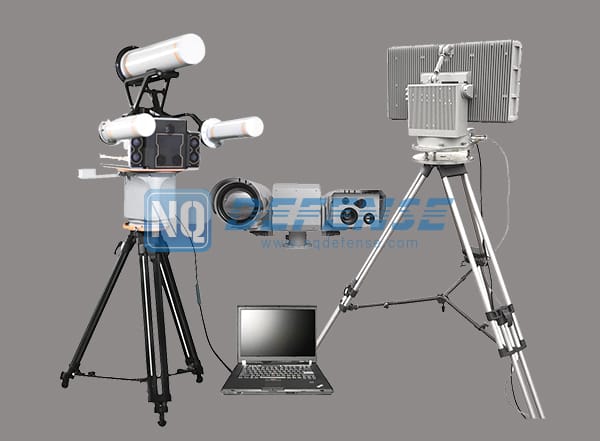
With the increasing application of drones, especially consumer-grade drones, various safety accidents have occurred from time to time, and some of them have even caused serious practical hazards. The problems in the development and management of civilian drones have become more and more prominent, and the detection, countermeasure and prevention and control management of drones have become a worldwide problem.
The current drone countermeasure systems can be roughly divided into three categories: one is monitoring and control, another is direct destruction, and the third is interference and blocking. The classification and characteristics of the current countermeasure technology are summarized as follows.
I.Radio Interference
Radio interference technology is to interfere with the drone’s positioning system or its radio signals to make it out of control, forcing the drone to land, hover or return.
Satellite Positioning Signal Interference
Radio interference is the main method of current drone countermeasures. Directional interference or omnidirectional interference can be used according to the practical needs. Most of the existing civilian satellite positioning modules use spread spectrum communication technology, and the signal is relatively weak. It can interfere with satellite frequency points and block the drone from receiving satellite positioning signals. After being interfered, the drone will drift or crash, however, this method will also cause interference to surround radio communication equipment.
Control-Signal Interference
Control-signal interference methods are divided into two types: remote-control signal frequency-band blocking interference and tracking interference. Tracking interference method can interfere with a specific frequency band according to the hopping of the drone remote-control signal, which narrows down the interference range, saves power, and has little impact on the electromagnetic environment. The frequency modulation range of the drone remote-control signal is wide, and it is necessary to use interference equipment with large real-time bandwidth, and which requires high processing capability and response speed of the interference equipment. The above two control-signal interference methods are ineffective for drones in autonomous flight mode.
II.Net Capture Technology
At present, the main methods of net capture technology include using large rotor-wing drones to load net guns and launch net bombs, using rotor-wing drones to mount capture nets to capture target drones, or using vehicle-mounted net bombs, or individual shoulder-resistant net bombs, etc. Due to the influence of the depth of field of the target drone, this type of method is difficult to accurately aim at, has extremely high requirements on the operation skills of the catcher, and has a limited success rate. In addition, this method is difficult to cope with swarm drone attacks.
III.Hard Damage Technology
Hard damage technology refers to the use of missiles, trained falcons, violent racing drones and other measures to directly destroy target drones. It requires high precision, and in crowded places, it is easy to cause the drone to lose control and cause secondary hazards.
IV.Laser Strike Technology
Laser strikes need to focus on special parts of the drone to burn and destroy the drone’s electronic speed controller (ESC) module or control circuit. It requires high-power laser. When facing the drone group, laser strike technology can only destroy one of them at a time, and it will take many times to completely destroy all target drones. Laser strike technology requires large-scale equipment. Due to the detection and aiming mechanism and the high-power requirements, the countermeasure equipment must be on board, and at the same time, it needs to be equipped with oil engines, water cooling tanks, etc.
V.High-Energy Microwave Strike Technology
Microwave equipment absorbs high-power microwave energy into the drone’s circuit module through microwave diffraction and drone internal circuit coupling, destroying circuit components and causing the drone to get out of control. High-energy microwave strike technology is limited by the transmitting power, and it is necessary to focus on increasing the strike distance.
Our anti-drone systems have integrated a variety of intervention methods and can use the best interference strategy for different drone devices. Together with the user-friendly software platform, the systems can provide efficient interference solutions.
To learn more about our Anti-Drone System features and specifications, please click the link below.
